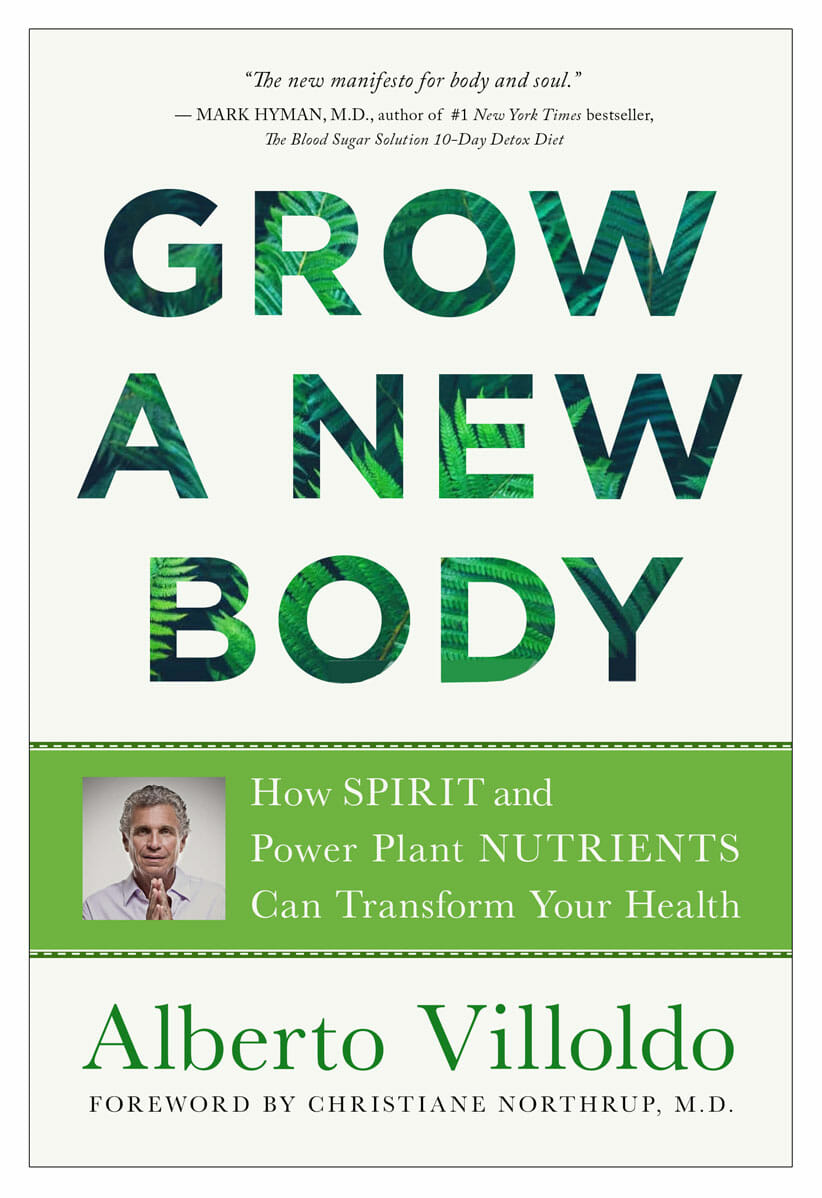
When Not Eating Can Feed Your Body’s Repair
Abstaining from food for short periods (the practice of intermittent fasting) as a way to cleanse body and mind has a history going back millennia. Indigenous medicine men and women, Buddhist monks, Christian mystics, and others would subsist on only water for a few days to prime the brain to function optimally and pray. In the process they would repair and upgrade their body.
However, there’s no need to fast from good carbs, including fruit, for more than 18 hours at a time. Brain repair starts to happen quickly, and brain fog begins to clear in a matter of days. As long as you drink plenty of water and refrain from rigorous exercise while you’re fasting, you may find that you don’t even experience hunger pangs, or if you do, that they’re mild enough not to bother you.
One form of intermittent fasting involves not eating any grains, or anything that turns into sugar in your bloodstream between 6 pm and noon the next day. This daily 18-hour fast will bring you into ketosis, a metabolic change that happens when your cells exhausts the energy from carbohydrates and sugars, and breaks down fats into a powerful fuel known as ketones. Then your brain starts burning ketones for fuel.
Hunger pangs while fasting are an indication that you are switching from the glucose fuel to the ketones, and your brain is beginning to burn fats. But your ancient limbic brain, that runs on sugars, may try to convince you that you’ll die if you don’t eat a glazed doughnut right away. Don’t give in to it. Simply observe your cravings, knowing that in fact, your body has enough fuel reserves to get you through the next 40 days without eating—though I don’t recommend it!
“Hanger” pangs are different. Hanger is what happens when you become angry as you get hungry. If you find yourself getting hangry as you do the daily 18-hour fast from sugars, it is because of Candida overgrowth in your GI tract. They want to be fed, and want to be sure that you know this, and they begin releasing toxins that signal the brain to increase the levels of ghrelin, the “hunger hormone.”
Triggering Autophagy through Intermittent Fasting
The purpose of intermittent fasting is not for weight loss. That’s a dangerous misuse of the practice. You fast in order to go into ketosis and turn on the body’s fat-burning system and repair mechanisms. Fasting brings about detoxification at a cellular level.
Reducing the intake of sugars and processed carbs for more than a few hours triggers a process called autophagy, in which more than 90 percent of the “waste” inside the cells is recycled into amino acid building blocks the cells can reuse for repair, and the remainder is eliminated as garbage. Cells have a most efficient recycling system. If our cities were as effective in recycling waste as our cells are, we would hardly have any garbage in our landfills.
As you detox, you release cellular waste into your bloodstream, where it’s carried to the GI tract and to the liver to be flushed out of the body. But fasting can be dangerous if your liver is not working properly, because if you are not eliminating the toxins in your bloodstream, you are recycling them. And the worst place toxins can end up in is the fatty tissue in the brain.
When Eastern sages and Western Christian mystics fasted, they did not have to deal with a toxic burden in their body or brain that modern humans have. They were not exposed to the chemicals you find today in our foods, in cosmetics, in water, and in the air. The Chernobyl nuclear tragedy had not contaminated the air and gardens in Europe, and the Fukushima Daiichi nuclear disaster had not contaminated the waters of the Pacific Ocean and the seafood that ends up in our dinner plate.
Upon entering ketosis during fasting, their bodies would go into repair mode, and they would activate higher order neural networks in the neocortex. They would begin to grow a new body as they attained mystical Oneness. When we’re burning carbs, the body is in building mode; insulin levels are high as we build muscle. When we stop utilizing carbs as our primary fuel, even for a few hours, we go into ketosis. This allows the body to recycle waste and repair itself. It triggers the production of stem cells in the brain and every organ in the body. It also awakens the higher order neural networks where we can have a spiritual experience, even when we are not looking for one.
Even during a short fast, amazing things happen to the body and brain. In just 24 hours, the production of human growth hormone increases by 1,500 percent, repairing cells that make up our tissues. Not eating carbs for as little as 18 hours switches on the longevity genes.
Intermittent fasting should be done carefully if you are hypoglycemic or diabetic. You should not undertake any long-term fasting until your blood sugar levels are regulated. Do not attempt this program while trying to maintain a diet made up primarily of sugar-filled, processed carbs. This means that you need to eliminate the pizza, pasta, bagels, croissants, potato chips, soda pop, and so on before starting this program. Be sure to fill your diet with high-fiber vegetables, avocado, olive oil, coconut oil, and raw nuts.

Benefits of Intermittent Fasting
The payoffs of the 18-hour daily fast include:
• Increasing your metabolism. After you exhaust the sugars in your bloodstream, your cells will begin to burn fat for energy.
• Providing a quality fuel for your higher brain. The ketones (fats) are jet fuel for the brain and will switch on the higher order neural networks involved in creativity, discovery, exploration, compassion, and the experience of Oneness necessary to grow a new body.
• Lowering levels of insulin. When you lower the levels of glucose in your bloodstream, your need for insulin is reduced, because insulin’s job is to remove glucose from the bloodstream. Insulin receptors in the cell have a chance to reset and reduce insulin resistance, and the risk for diabetes.
• Increasing the detoxification of every cell in your body. Ketosis allows for autophagy and recycling of cellular debris, emptying out the garbage.
• Preventing cancer and reducing the proliferation of existing cancer cells. While cancer cells can readily burn glucose (sugar) for fuel, their impaired metabolism makes it difficult for them to burn ketones (fat). In addition, ketosis lowers the levels of the tumor marker IGF-1. That is a sign that the ketosis is preventing cancerous tumors from growing or spreading.
• Protecting the brain. Ketosis reduces inflammation in the brain and body and turns on the production of stem cells in the brain. It does this by activating BDNF, brain-derived neurotrophic factor, which enhances brain repair.
Be sure that you give your liver support for eliminating the toxins that will be released into your bloodstream from your fatty tissues as you begin to burn fat for fuel. Zinc, B12, magnesium, and glutathione will help your liver do its job. Without these nutrients, the liver will not eliminate toxic waste effectively, and the toxins may end up in your brain.
It will take a few weeks to persuade your gut flora to become comfortable with eating only one or two meals a day. Remember that they are the ones who eat first, and you have trained them to eat three meals a day or more. Once your body has shifted into fat-burning mode, you will find it easy to go for 18 hours without feeling hunger pangs. Your cravings for sugars will gradually dissipate as you eliminate the Candida and you restart your fat-burning engines that have been dormant for decades.
Encouraging Autophagy through Fasting
Autophagy is the garbage disposal service inside the cells, the process by which cellular waste is broken down and damaged mitochondria are recycled to harvest amino acids, the building blocks of new cells. So just as dead plants in the forest get turned into food for new plants with the help of microbes that break them down, your body has a system for recycling the amino acids from dead and damaged mitochondria to make new cells. It is called autophagy.
Aerobic exercise triggers autophagy: exercise consumes oxygen, which starves off the weakest mitochondria while fostering the growth of more vigorous ones. Detoxifying is another way to jump-start mitochondria. And eating a diet high in phytonutrients switches on the antioxidant production inside the cell that repairs mitochondria and supports autophagy.
The most effective way of supporting autophagy is through fasting. Even a short 18-hour fast between dinner and lunch the next day causes the body to go into repair mode. The body’s ability to switch over to burning fat gave us an edge when it came to surviving harsh winters when food was scarce. But our mitochondria can’t make the switch if our fat deposits become waste dumps for toxins. The body in its wisdom will not burn fats if they are full of poison. To switch from carb-burning to fat-burning, you have to begin recycling waste and eliminating toxins.
Why Grow a New Body?
After starting the Grow a New Body program, you will find it much easier to maintain your equilibrium no matter what is happening around you. You won’t have a brain full of toxins or a gut overpopulated with Candida sending you back into the old emotional responses. Whatever uncertainties you face, you will find your eyes are now open to opportunities for experiencing something better. You will have the inner resources that serve you in creating a life of your own making.

Excerpted from Grow a New Body: How Spirit and Power Plant Nutrients Can Transform Your Health by Dr Albert Villoldo (Hay House). Reprinted with permission.
Learn more about the full program for transforming your health at: growanewbody.com.
Medical anthropologist and best-selling author, Alberto Villoldo Ph.D. has studied the shamanic healing practices of the Amazon and Andes for over 30 years. He is the founder of the Four Winds Society and Light Body School, which trains certified energy medicine practitioners. The Light Body School is internationally recognized as the Gold Standard in shamanic education, bridging ancient shamanic wisdom teachings with cutting-edge practices in nutrition, biology, and neuroscience.
Villoldo is author of 17 books, including Power Up Your Brain; Shaman, Healer, Sage; The Four Insights; One Spirit Medicine; A Shaman’s Miraculous Tools for Healing; Soul Journeying; The Illumination Process. His newest book, The Heart of the Shaman: Stories & Practices of the Luminous Warrior, published by Hay House and available for pre-order from Amazon and major booksellers, will release July 31, 2018. thefourwinds.com
